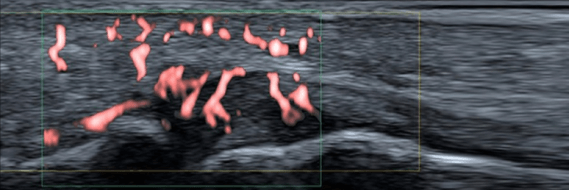For any musculoskeletal injury or dysfunction, early and accurate diagnosis is key to speedy treatment and recovery. Superior microvascular imaging (SMI) is a highly sensitive and specific tool used in conjunction with grey-scale ultrasound imaging to diagnose pathological changes before they appear on any type of imaging. This is possible due to the ability of this breakthrough innovation to see otherwise invisible microscopic blood vessels.
This capability, in conjunction with grey scale high definition ultrasonography, provides the clinician with a 4th dimension view. It is not yet available with any other imaging modality or any other ultrasound technology. The importance of SMI for the rehab practitioner cannot be underestimated, as it not only allows for earlier and more precise diagnosis, but it has practical applications for treatment selection, monitoring of therapy dynamics, and pre- and post-treatment assessment.


























































